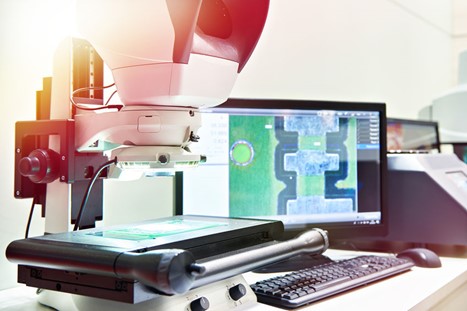What is an Illuminator Microscope Used For?

Microscopes are often at the forefront of all sorts of medical industry and industrial innovation. Achieving these milestones requires an ever more sophisticated type of microscope — one that can help the viewer see small objects easily without straining the eyes. This is why the powerful illuminator microscope was created.
Gone are the days when researchers must solely rely on room lighting to see microscopic objects under the viewfinder lens. Innovation in microscope manufacturing has led to advanced models with built-in illumination. Finding the best illuminator microscope for workplace needs can be done by comparing various models with one another. If you’re beginning that journey, understanding more about these magnifying tools may prove to be helpful in your search.
Illuminator Microscope Meaning
What exactly is an illuminator microscope? Fortunately, the answer is simple. This type of microscope features a built-in source of illumination (usually in the base of the unit) that brightens the area underneath the lens.
The level of illumination is intense enough to create a brilliant background
for viewing all sorts of microscopic objects that may otherwise be obscured
from view.
Microscope Functions
How does an illuminator microscope function?Sophisticated technology involving light beams reflected in mirrors is what makes this degree of illumination possible. Optical lenses can also be calibrated to control various aspects of the level of illumination, and they can even provide more color enhancement. The viewer can control light levels through one or more knobs located on the microscope.
Each model offers different illumination features, which is why comparisons are recommended. In addition to illumination, other factors to consider are lens magnification, lens focus, level of image contrast, intensity of illumination, optical eyepiece comfort, and any settings that help with comfort.
Usefulness of Illuminated Microscopes
When making the decision to invest in illuminator microscopes, it’s important to know what purpose it can serve in the professional work setting. For instance, a microscope with a built-in light is highly recommended for studying various types of living cells. In addition to viewing cells, the researcher can also see its distinctive color. For anyone involved in medical research, these microscopes prove to be an invaluable research tool.In comparison, a typical electron microscope offers higher magnification and resolution than lighted models. However, this type of microscope is not recommended for viewing living cells.
Other industries who use microscopes may find that an illuminator microscope is the right choice for certain types of work tasks. Magnification combined with strong illumination can make assembling tiny objects easier. As long as the magnification need doesn’t exceed 1500x, it’s a great choice for numerous tasks, including inspection.

Advantages of Illuminator Microscopes
Let’s review some of the main advantages of illuminators for multipurpose uses:
- Enhanced viewing. There’s no substitute for a microscope with built-in high-quality lighting that provides natural color for viewing objects and specimens. Also, a high level of brightness reveals the tiniest of details.
- LED and fiber optics. Most models use LED or fiber optics for superior area lighting.
- Compact. These microscopes are typically compact in size, making them ideal for workstations with limited space.

